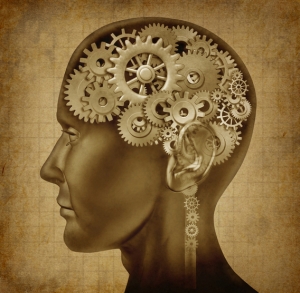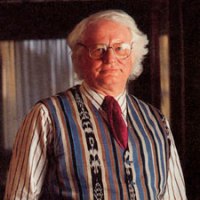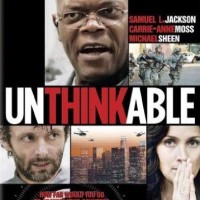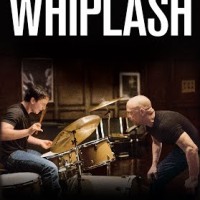The background to this post is that I am registered on the Open University’s 7-week long massive open online course (MOOC) which also forms part of the module for students who are studying The Open University course H817, ‘Openness and innovation in elearning’. Tomorrow is week 4 and I am falling behind already so what follows as the Week 2 task.
#h817 Open Activity 7: Exploring Open Education Resources (OER)
My mission (which I decided to accept) was to read at least three articles from a suggested reading list and write a blog post of around 500 words, setting out what I perceive as the three key issues in OER, and how these are being addressed.
 “Using technology to improve education is not rocket science. It’s much, much harder than that”. This soundbite from Diana Laurillard dramatically sums up the scale of the task facing educators in the face of the information overload.
“Using technology to improve education is not rocket science. It’s much, much harder than that”. This soundbite from Diana Laurillard dramatically sums up the scale of the task facing educators in the face of the information overload.
Her paper on how to make teaching sustainable and effective was the one that seemed to best address the realities facing educational institutions. Whilst they recognise the inevitability of change, too many schools and universities are still run by those with a pre-digital mindset.
Anybody who thinks that technology is the panacea that automatically guarantees efficient learning is barking up the wrong tree. But it is equally erroneous to believe that ‘traditional’ teaching methods have all the answers. Diana Laurillard continues : “Technology is never the whole solution……however good it is, it achieves little without the complementary human and organizational changes needed, and these are always more difficult”.
Few would argue with the goals outlined by John Seely Brown in his foreword to Opening Up Education : “we need to think about how technology, content and knowledge about learning and teaching can be creatively combined to enhance education and ignite students’ passions, imaginations and desires to participate in constant learning about (and sense making of) the world around us”.

If only we could get life skills as easily as Trinity in The Matrix!
But passion and desire are strong emotions that cannot be fired by machines or inspired by a check list of learning resources.
In the first Matrix movie, Trinity needs to pilot a helicopter and downloads the requisite skills directly to the brain. Real life doesn’t work like this so the deluge of course content from top universities is of limited value unless backed up by a support network of teachers and peers.
The distinction between information and knowledge is one that writers on OERs return to time and time again. A highly motivated learner will beat a path through the mountains of resources but most mortals need a skilled sherpa to get properly orientated.
Diana Laurillard is right to stress that the drivers of the education system need to change while teachers and lecturers need adequate training and technical support for there to be an effective use of the technology. I particularly like the way she speaks of the education process as one of “mutual trust and nurturing, more akin to parenthood than commerce”.
In a separate article about why resources alone are not enough, Calvery & Shepherd make the odd statement that “students need to develop information literacy” which has never been the fundamental problem in my experience. Far more crucial is what they add: “Lecturers are also uncertain about the value of the wider information resources on the Internet”and furthermore that “the organisational and cultural mechanisms are not yet sufficiently in place”.
I’ve been involved with blended courses as an EFL teacher for the past 7 years or so and, along with my colleagues, have had to pick up skills as I go along. The sheer volume of options and learning tools available now means that this ad-hoc approach is inadequate.
It is now self-evident that apps and other digital tools have to be interactive in ways that engage the learner and stimulate creative thought. E-learning platforms are not just about transferring exercises from paper to the screen but involve finding new, and more original, ways of presenting material. We are,lest we forget, talking about a change in very nature of education culture.
In the conclusion to the ‘Opening Up Education’ book, Iiyoshi and Kumar write: “Open education demands a fresh perspective on resources and relationships available to education” and argue that this means “recognizing and integrating the learner as an active, core participant in the creation and delivery of the educational experience”.
A fundamental difference between the old ‘closed’ methods and ‘open’ education is that it no longer makes sense to talk of teaching merely in terms of disseminating resources but learners are more actively engaged with a view to extending the boundaries of the learning process.
This is why the key debates now are those centred not on building the quantity of OERs but on improving the quality of education.

Badge awarded by the h817 team for this post!
To achieve this requires a major rethink of existing institutions, a higher emphasis on training for educators and a more transparent approach towards developing course material.
Access to information means little unless it is accompanied by access to other people.
—————————————————————–
The papers I read were:
‘Assisting the uptake of on-line resources: why good learning resources are not enough’ by Gayle Calverley & Kerry Shepherd (2003)
From – Opening Up Education: The Collective Advancement of Education through Open Technology, Open Content, and Open Knowledge, Cambridge, MA.: MIT Press edited by Toru Iiyoshi and M. S. Vijay Kumar (2008):
- Foreword : Creating a Culture of Learning by John Seely Brown
- Introduction: An Invitation to Open Up the Future of Education by Toru Iiyoshi and M. S. Vijay Kumar
- Evaluating the Results of Open Education” by Edward Walker
- Why Understanding the Use and Users of Open Education Matters by Diane Harley
- Open Teaching: The Key to Sustainable and Effective Open Education by Diana Laurillard
- “Revolutionizing Education through Innovation: Can Openness Transform Teaching and Learning? by Catherine M. Casserly and Marshall S. Smith
- Conclusion: New Pathways for Shaping the Collective Agenda to Open Up Education by Toru Iiyoshi and M. S. Vijay Kumar
Related articles
- Three key issues relating to the development of Open Education Resources (OER) (mymindbursts.com)
- Open Educational Resources – Opportunities and Challenges for Higher Education (learningwithtechs.wordpress.com)
- Fostering Creativity – The Use of Open Educational Resources (classroom-aid.com)







